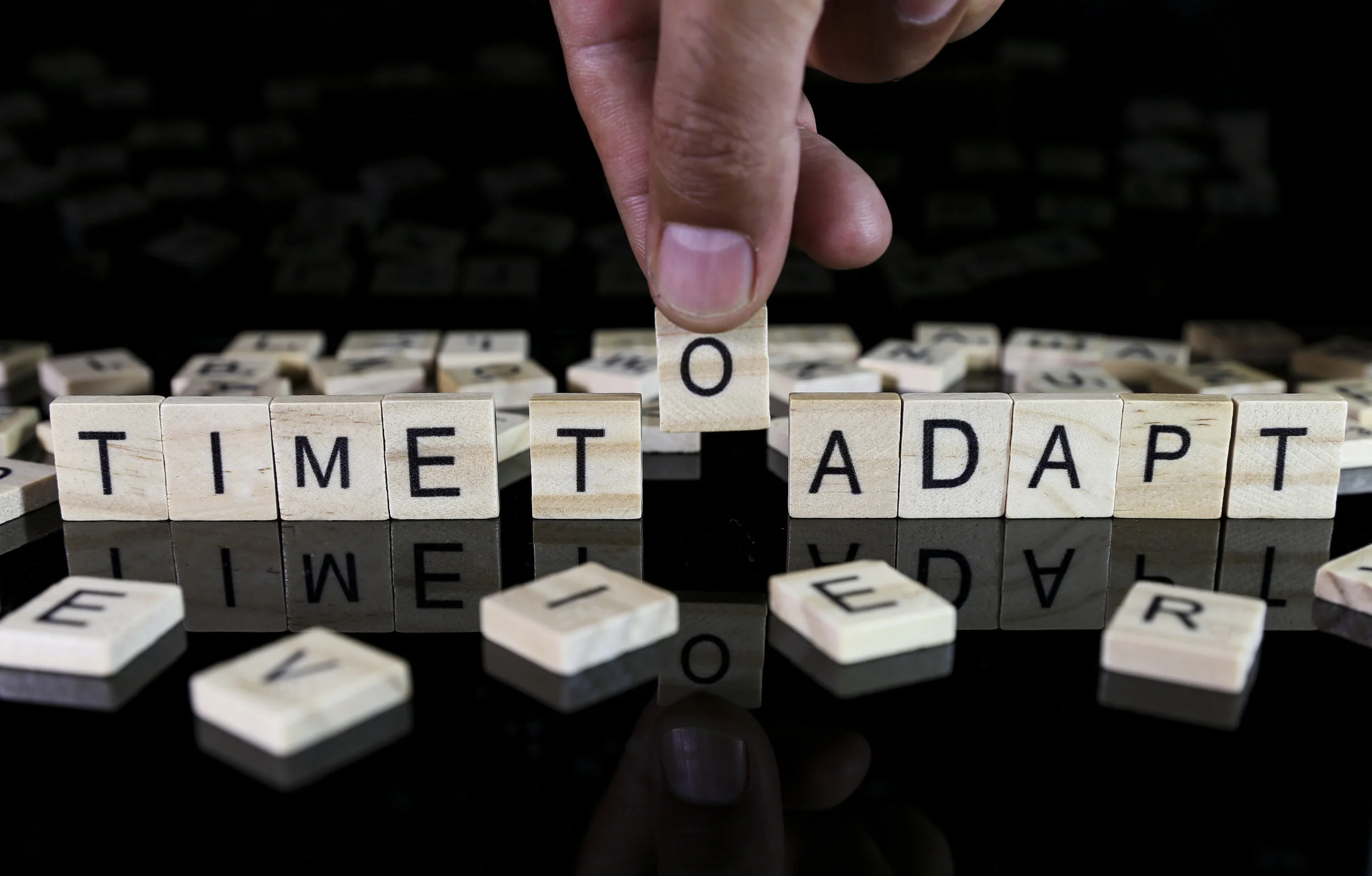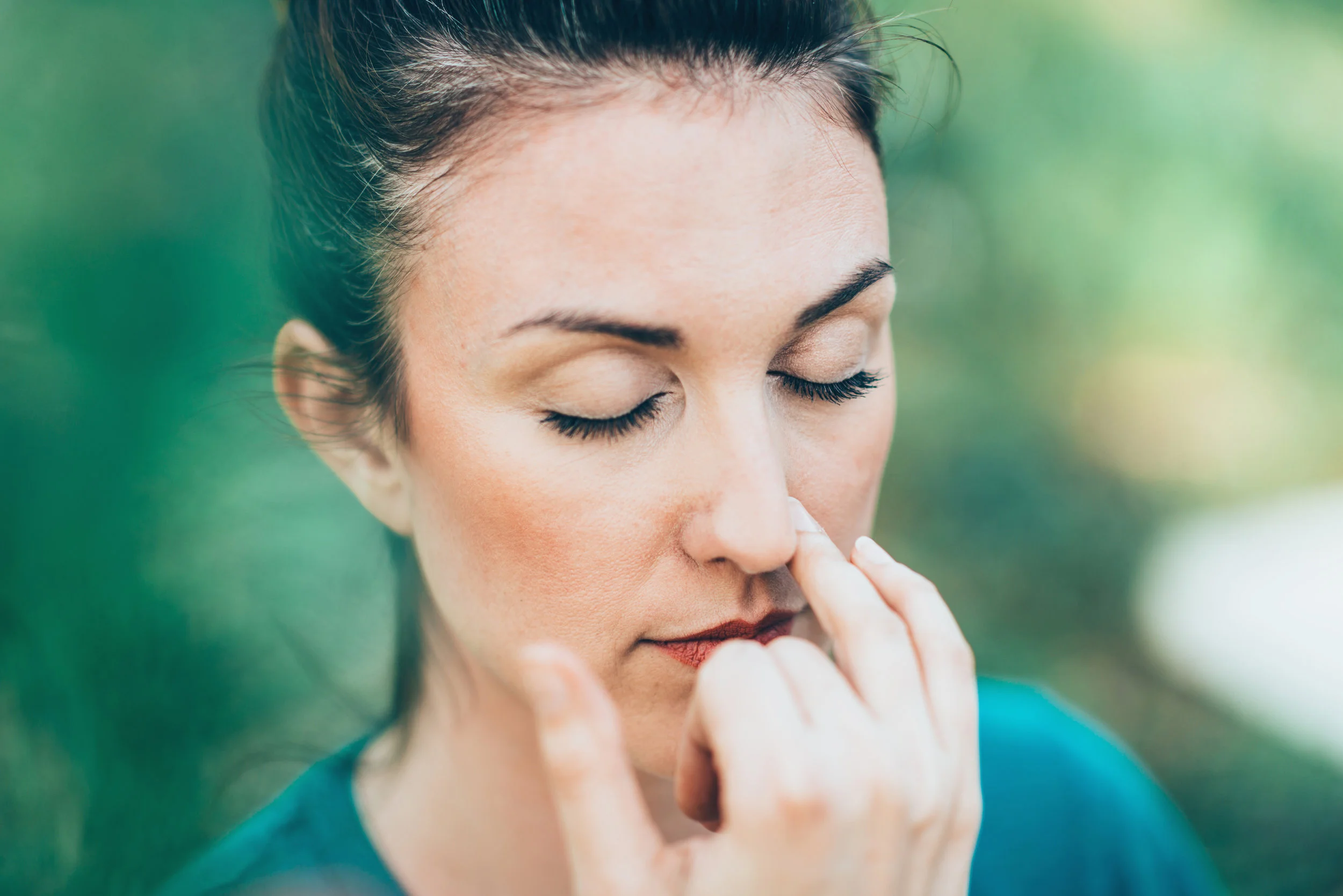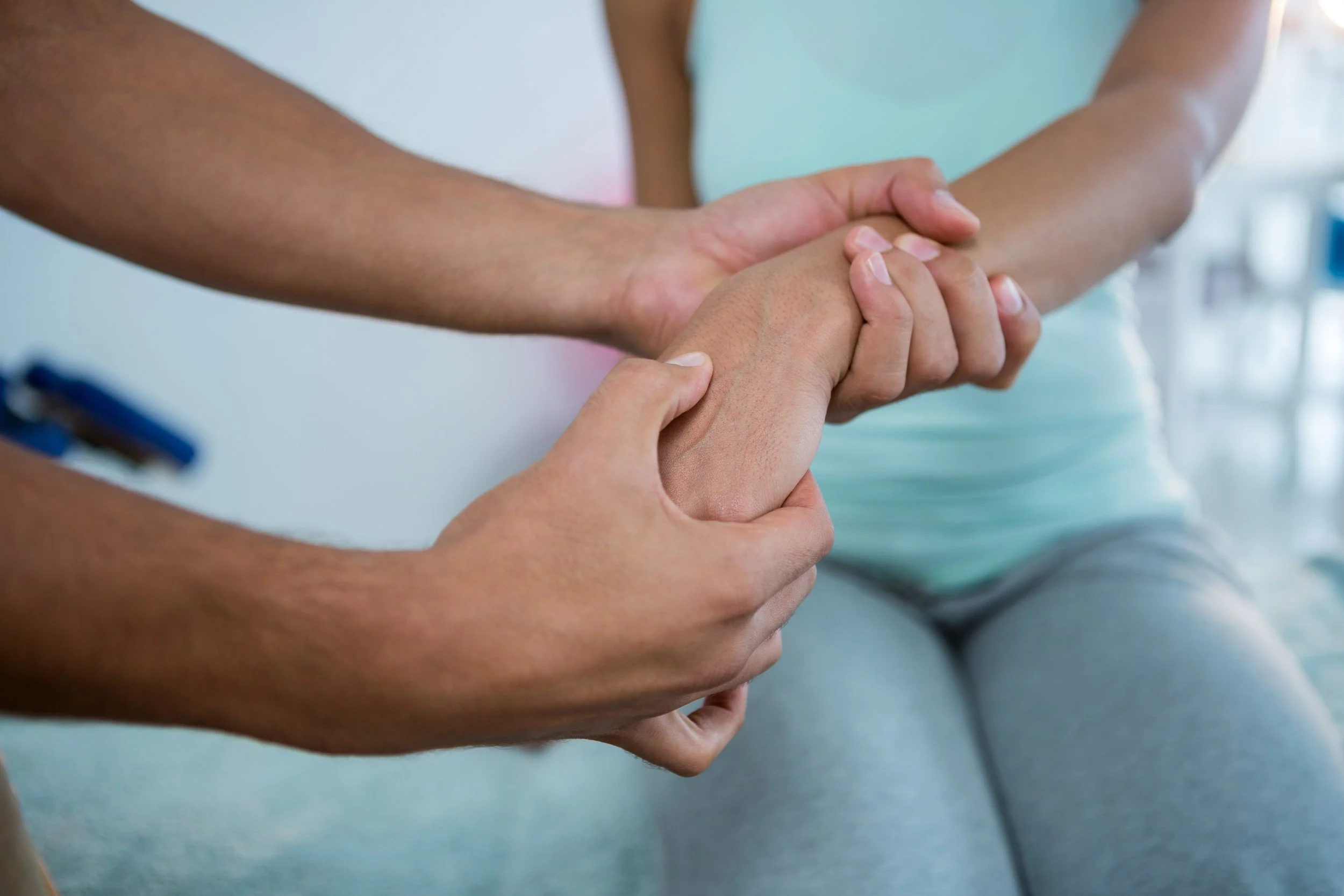When someone says they feel tight in a particular area, they might be referring to several different complaints. So I try to find out:
•Are they talking about poor range of motion?
•Or maybe range of motion is fine, but movement to the end range feels uncomfortable or takes excess effort.
•Or maybe the problem isn’t really with movement, but just that the area never reels feels relaxed.
•Or maybe the area feels basically relaxed, but has some vague sense of discomfort - a feeling that is unpleasant but too mild to be called pain.
This ambiguity means that the feeling of tightness is just that - a feeling - which is not the same thing as the physical or mechanical property of excess tension, or stiffness, or shortness. You can have one without the other.
For example, I have many clients tell me their hamstrings feel tight, but they can easily put their palms to the floor in a forward bend. I also have clients whose hamstrings don't feel tight at all, and they can barely get their hands past their knees. So the feeling of tightness is not an accurate measurement of range of motion.
Nor is it an accurate reflection of the actual tension or hardness of a muscle, or the existence of "knots." When I palpate an area that feels tight to a client (let’s say the upper traps), they often ask - can you feel how tight that is?!
I often say something like:
Ummmmmm ...... no. It feels just like the surrounding tissues.
But I completely understand that it FEELS tight in this area and you don't like it.
I don't like the feeling of tightness either so I want to help you get rid of it. But the feeling of being tight isn’t the same thing as that area actually being physically tight. Make sense?
This actually does make sense to most people, and they find it mildly interesting. I want people to understand this because it might help them reconsider a misconceived plan they may have already developed for curing their tightness - such as aggressive stretching, fascia smashing, or adhesion breaking. So now they are willing to consider an approach that is a bit more subtle than driving a lacrosse ball halfway through their ribcage.
Why do muscles feel tight if they are not actually tight?
So why would a muscle feel tight even if it physically loose?
I think we can use pain as an analogy. Pain can exist even in the absence of tissue damage, because pain results from perception of threat, and perception does not always match reality. Pain is essentially an alarm, and alarms sometimes go off even when there is no real danger.
Perhaps a similar logic is involved in the feeling of tightness. The feeling happens when we unconsciously perceive (rightly or wrongly) that there is threatening condition in the muscles that needs a movement correction.
So what is the threatening condition that a feeling of tightness is trying to warn us about? Surely it is not just the presence of tension - muscles are made to create tension and we often feel tightness in muscles even when they are almost completely relaxed.
So tension is not a threat, but the absence of adequate rest or blood flow is a threat, which could cause metabolic stress and activate chemical nociceptors. So the problem that a feeling of tightness is trying to warn us about is not the existence of tension, but the frequency of tension or the lack of blood flow (especially to nerves, which are very blood thirsty.)
With this in mind, I think of the feeling of tightness as a variety of pain, perhaps a pain too mild to deserve being called pain. But it is definitely bothersome. And it has a certain flavor or character that motivates an interest in changing resting posture, or moving around or stretching. Which is different from certain pains, which often make you want to keep still. Maybe we could say that pain is warning us to not move a certain area, while tightness is warning us to get moving.
How Can You Cure Muscle Tightness?
I think we can probably treat the feeling of tightness in the same way we treat pain - by changing one of the many "inputs" that cause the nervous system to perceive threat in the body, such as nociception, thoughts, emotions, memories, etc.
Some pains are very obviously related to movement or postural habits. We can know this if someone says something like: "It hurts when I do this, and it hurts even more when I do more of this, and it hurts less when I do less of this." In this case, changing movement or posture is likely to help because it will reduce the main driver of the pain – mechanical nociception caused by movement.
On the other hand, there are many other cases of pain, particularly chronic pain, that are more complex – the pain doesn't correlate very much with certain movements or postures, but instead with other variables like time of day, sleep duration, emotional state, stress level, diet, general exercise, or some random unknown factors. In this event, it is unlikely that mechanical nociception caused by movement is the main driver of the pain, and more likely that peripheral or central sensitization are playing more of a role.
I think we can look at the feeling of tightness in the same way.
In most simple cases of feeling tight, the cause is obvious – we have been stuck in the same posture or movement pattern for too long, and our muscles need a rest or change of position to reduce the ischemia or metabolic stress that is causing nociception in certain areas. For example, if we spend hours in a car, or an airplane, or behind a computer, we will instinctively feel compelled to stretch and move, and this will usually alleviate any feelings of stiffness or yuckiness.
Of course, most clients who complain of chronic tightness have already tried and failed at this simple strategy. The feeling of stiffness remains for hours and days at a time, comes and goes as it pleases, and is less related to posture and movement.
In these cases, the driver of the discomfort may have more to do with the nervous system becoming either peripherally or centrally sensitized to the need for more blood flow in certain areas. This could happen through local inflammation, adrenosenstivity, increased sensitivity at the dorsal horn, or maybe even learned associations between certain environments (say computers) and certain sensations (e.g feeling like crap).
So how do we reduce this sensitivity?
There isn't an easy answer to this question, because if there was, it would solve the problem of chronic pain, and no one is figured out how to do that yet. But if I'm right that the feeling of tightness is a mild form of pain, then it should at least be easier to deal with.
Below is a list of several methods people often use to address a chronic feeling of tightness, along with some thoughts about each strategy from the above perspective. You'll notice that some of the recommendations run exactly opposite to what people often do.
Stretching
We instinctively stretch muscles that have remained in a short position for a while, and this usually makes us feel immediately better.
But, as noted above, most people who suffer from chronic tightness have already tried and failed at this strategy, which suggests the issue is less about bad mechanics and more about increased sensitivity.
The problem is that many people, and indeed many therapists, will think that the failure of a few simple stretches indicates the need for a far more aggressive program. This would of course make sense if the root of the problem was short or adhered tissues. But if the root problem is in fact increased sensitivity, then aggressive stretching might just make the problem worse. On the other hand, stretching can often have an analgesic and relaxing effect.
So is stretching a good way to cure tightness? Like with most things, I say if it feels good do it. If it doesn't ... don't.
Soft tissue work for Tightness
There are various soft tissue treatments (deep tissue massage, foam rolling, Graston, ART, IASTM) intended to lengthen short tissues, break adhesions, or melt fascia, etc. This is very likely impossible, as I and many others have pointed out.
But could these treatments decrease sensitivity and make someone feel less tight? For sure, by activating descending inhibition of nocicieption, which is a well-known effect of painful stimulation that is expected to bring health benefits.
But of course these treatments also create nociception, which tends to increase sensitivity. It's a fine balance that depends on the individual and many other variables. Again, if it feels good do it, but it's an option not a necessity, it's only temporary, and you should keep in mind the reason for doing it.
Motor control for Muscle Tightness
Many forms of movement therapy are essentially motor control approaches – they seek to change movement, postural and breathing habits so they are more efficient, eliminate parasitic tension, develop the skill of relaxation, etc.
Habits are hard to break, but this strategy is worth a shot, especially in cases where tightness seems related to certain postures or movements. Of course, where the situation is more complex, motor control shouldn't be expected to fix the problem on its own.
Exercise and resistance training
People tend to associate strength training with becoming tighter. During exercise, muscles of course become very tense, and they may feel stiff the next day because of delayed onset muscle soreness. There is also the (false) idea that strength training makes muscles shorter and less flexible.
These concerns are unfounded. In fact, full range of motion strength training can increase flexibility, perhaps more than stretching. It creates local adaptations in muscle that may improve endurance and make them less likely to suffer metabolic distress. And exercise also has an analgesic effect and can lower levels of inflammation that cause nervous system sensitivity.
Here's a personal anecdote. Back in the days when I did yoga I had much more flexibility, but my hamstrings always felt tight. Then I quit yoga and started doing a lot of kettlebell swings. My forward bend decreased a bit, but the feeling of hamstring tightness was GONE, even though I was working the hamstrings HARD. In its place was a feeling of functional strength and capacity, which I imagine decreased any perception of threat related to lengthening my hamstrings.
Of course if you overwork your muscles from strength training and don't let them recover, they will get sensitive, stiff and sore. But if you work them the right amount - enough to create an adaptation and not too much to cause injury or prevent full recovery - then you will make them healthier, stronger, and yes - less stiff.
Conclusion
When you feel stiff, remember it is a feeling, and not necessarily a physical condition of shortness that needs an aggressive structural solution. Like other feelings, you feel it more when you are sensitive. And like other forms of sensitivity, it will go down if you improve your overall fitness, strength, awareness, motor control and health.
This article originally appeared on Better Movement & was written by Todd Hargrove.











![Self-regulation “control [of oneself] by oneself"](https://images.squarespace-cdn.com/content/v1/55563e14e4b01769086817cb/1542845645966-PO2HGKF5JLUBM45UIWQ3/wee-lee-790761-unsplash.jpg)



















